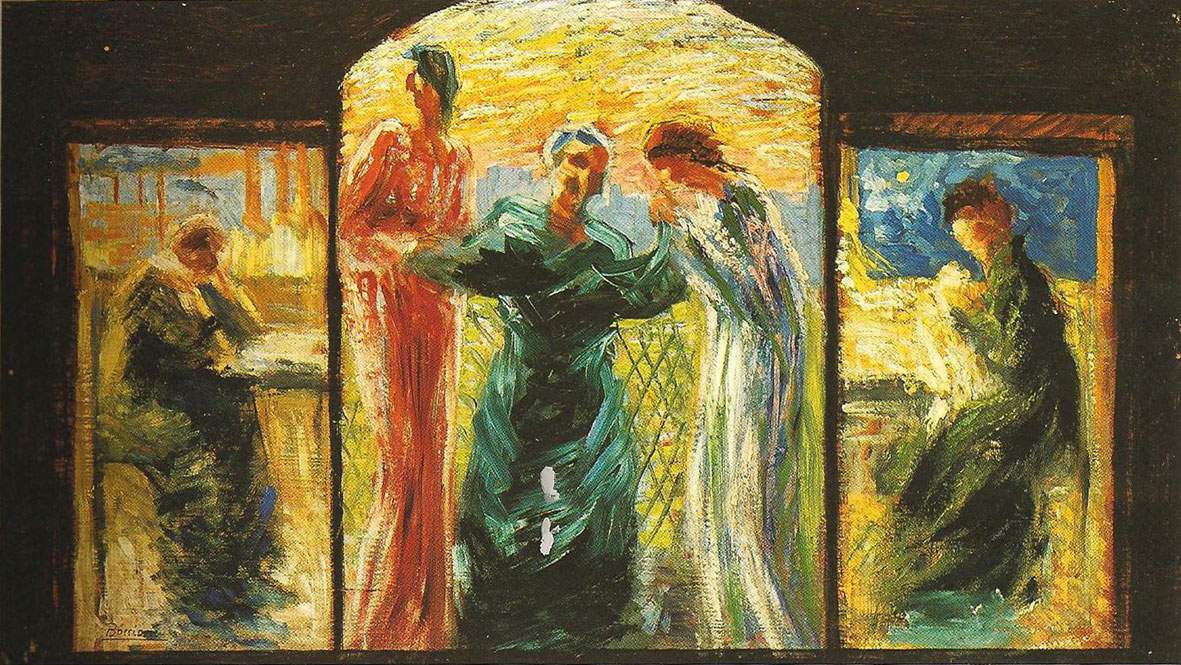An exhibition in Milan investigates the young Boccioni, before futurism
From October 8 to December 4, 2021, Galleria Bottegantica in Milan will host the exhibition Il giovane Boccioni (The Young Boccioni), which will investigate the early production of Umberto Boccioni (Reggio Calabria, 1881 - Verona, 1916) through a selection of works from 1901 to 1909. Numerous exhibitions have investigated the figure and work of Umberto Boccioni in recent decades. Few, however, are those that have traced with scientific rigor the artist’s youthful and formative phase, in which the study of the past is linked to the irrepressible desire to know the present and experiment with the future. Thus, the exhibition with which Galleria Bottegantica inaugurates the 2021 exhibition season is dedicated to this period.
Curated by Virginia Baradel, in collaboration with Ester Coen and Niccolò D’Agati, the exhibition proposes, as anticipated, a selection of works executed by Boccioni between 1901 and 1909, years in which the young Boccioni strengthened his artistic vocation through study experiences conducted in Rome, Padua, Venice and Milan, interspersed with the important 1906 Parisian sojourn and the subsequent trip to Russia. The influence of different European figurative currents and the interest in the classical and Renaissance tradition repeatedly surface in the works of the period and find, especially in the graphic production, a valid laboratory of experimental analysis, invention and stylistic verification that Boccioni conducts in parallel with painting. The sign, from time to time woven into a dense chiaroscuro grid, or peremptory and deforming, or frayed and pulverized accompanies the phases of Boccioni’s pictorial evolution: from the imprint of Giacomo Balla to the luminous dematerialization that followed the ’discovery’ of the Divisionist works of Giovanni Segantini and Gaetano Previati.
It is precisely to the work on paper that the exhibition devotes particular interest through a selection of drawings covering the years of the young Boccioni’s apprenticeship. An initial nucleus of works with a scholastic imprint dating back to the period in which he was a pupil of Giacomo Balla and attended the schools of pictorial drawing and nude drawing in Rome, is flanked by another, more copious and diversified, traceable to the years immediately following, in which the stroke acquires confidence in returning us precise architectural visions, curious portraits (some of which border on caricature) and human figures of extreme formal synthesis. Taken together, these sheets document an insistent and articulate apprenticeship of study, the purpose of which is to acquire a mastery in the perspective rendering of volumes, but also of physiognomies and movements (studied or caught on the fly) of the human body in space: aspects common then to many artists of modernity. The museum copies also belong to this apprenticeship period.
Another aspect that the exhibition focuses on concerns the commercial tempera paintings that Boccioni painted in these years for mostly economic reasons, but which are nonetheless to be considered important training ground in his artistic maturation and probing of modernity, as much for the themes addressed as for the compositional and chromatic solutions adopted. The eagerness to learn and refine his artistic skills also characterized the artist’s Venetian period, during which he experimented (under the guidance of painter Alessandro Zezzos with the engraving technique).
The exhibition’s itinerary concludes (as does the artist’s formative one) with Boccioni’s move to Milan in September 1907. His interest in the works of Giovanni Segantini and Gaetano Previati, admired a few months earlier at the Venice Biennale and in Paris in October, oriented the young man toward the search for a style capable of reconciling positivist modernity with idealism, although economic problems forced him to accept less qualified commissions in the field of illustration and poster art. While aspiring to Previati’s sublimity, the coeval pictorial production finds expression in small views of Lombard landscapes that nonetheless demonstrate an outgrowth of the Impressionist texture still present in the canvases of the Venetian period. Decidedly more experimental are the results conducted in the portrait side, where the brush becomes feverish in its urgency to restore on canvas the singularity of a face, expression or character as in Ritratto di scultore (Portrait of a Sculptor ) and Il cavalier Tramello (The Cavalier Tramello ) of 1907.
In the exhibition these themes are witnessed by fine works starting with The Sick Mother of 1908 and ending with The Mother from the Ricci Oddi collection. Others document instead the Symbolist parenthesis of 1908-1910, which finds in The Mourning its most harrowing and esoteric outcome. Equally interesting are the sketches for the manifesto of the Painting and Sculpture Exhibition promoted by the Famiglia Artistica in Brunate (May-June 1909): a perfect synthesis of the different stylistic figures Boccioni has so far acquired, from Divisionism, to the broad and synthetic brushstrokes of a post-Impressionist matrix, to Symbolism. Accompanying the exhibition is a catalog, published by Bottegantica editions, with contributions by Virginia Baradel, Ester Coen and Niccolò D’Agati, and a registry of the drawings and temperas edited by Niccolò D’Agati.
Image: Umberto Boccioni, Veneriamo la madre (1907-1908; oil on panel, 27 x 56 cm)
 |
| An exhibition in Milan investigates the young Boccioni, before futurism |
Warning: the translation into English of the original Italian article was created using automatic tools. We undertake to review all articles, but we do not guarantee the total absence of inaccuracies in the translation due to the program. You can find the original by clicking on the ITA button. If you find any mistake,please contact us.




























